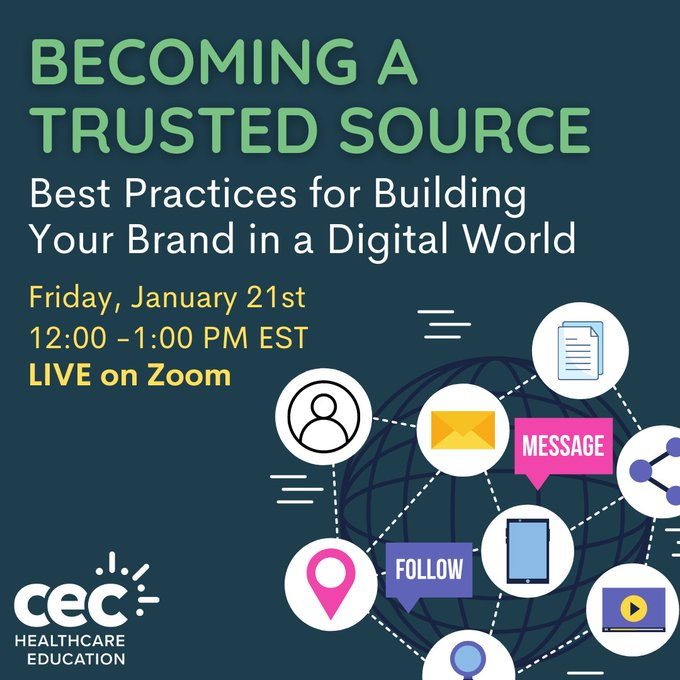In the healthcare communications field, everyone is familiar with the term key opinion leader, but with the rise of social media, we’re seeing a new breed of influencer emerge: the digital opinion leader (DOL). Like KOLs, DOLs are influential forces in the views and behaviors of physicians, patients and policymakers. Unlike KOLs, seniority and experience (read: podiums, scientific posters and peer-reviewed publications) are not prerequisites for success. And while getting covered by traditional media comes with the power of third-party credibility, DOLs have an opportunity to use more direct and immediate channels to reach their audience. This democratization of influence has opened the door for both individuals and organizations to establish their expertise and grow their brands in ways traditional media cannot.
So how does one become a successful DOL in today’s increasingly crowded digital landscape?
Thought leadership, online or off, is more effective than many forms of communication because there’s something in it for the audience. It’s not just about selling; it’s about being a resource.
As a recent guest speaker in a Creative Education Concepts webinar, “Becoming a Trusted Source,” I gave tips on best practices for building your brand as a thought leader. I touched on what we consider to be the five best practices with examples of some stand-out influencers, which can serve as a guide for anyone considering jumping into the digital ecosystem as a DOL.
Best Practice #1: Make a Declaration
A big part of establishing your own expertise is getting your point across. Make your point clear from the start by making a declaration. Your brand should stand for something, not sell something.
Here you see Dr. Prowell take a stand, advocating for equity. This tweet is more than three years old, but she keeps it pinned to her profile, so everyone knows that’s what she’s about. And she delivers on it in her tweets and retweets. She recently spoke up for a female provider who had to pump breast milk while simultaneously intubating patients given how short staffed the hospitals are. She’s also strategic about the hashtags she uses to make sure people see her tweets as part of the bigger conversation.
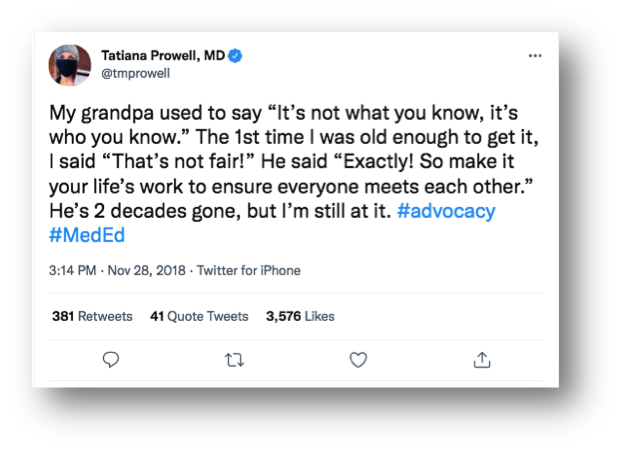
Best Practice #2: Use Clear, Consistent Language
Get your point across by using language that is accessible and use it consistently.
Here is a great example of sharing studies in a way that adds value. Dr. Natarajan takes a plain-language approach with an emoji that brings attention to the key finding, and he includes a quote for credibility. If reaching patients and advocates is an objective, it’s best to use plain language.

Pictures > Words
Word choice is critical but sometimes visuals can be more powerful. With this tweet, Dr. Dean brings understanding to a complex issue by drawing her own data visualization. This had 11K likes and about 5K retweets. She then isolated each section of her drawing in follow-on tweets to create an 8-tweet thread.
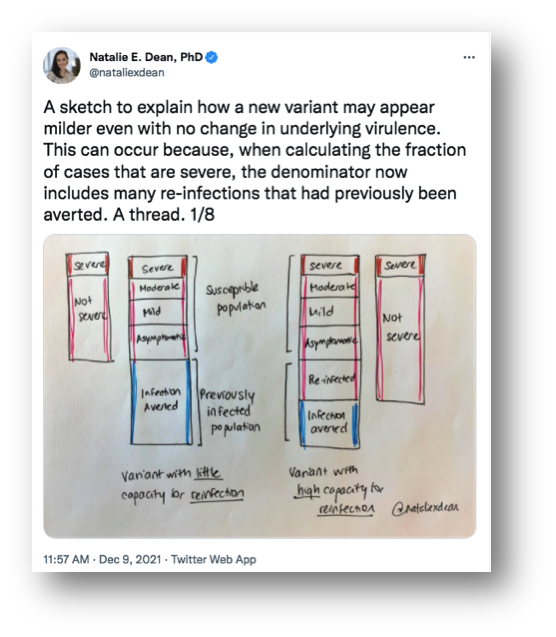
Best Practice #3: Know Your Audience
Your story will not resonate with everyone and that’s ok. What you’re aiming for is your target audience. Bernie Marini is a Clinical Pharmacist Specialist who gave his POV on posters presented at the American Society of Hematology conference. Rather than taking a straight-forward approach, he assigned each paper a Harry Potter character and got more engagement on this thread than anything else he has tweeted – by a large measure. And it was retweeted by influencers with much bigger followings. Not bad for a burgeoning influencer with fewer than 2K followers!

Remember: Everyone loves babies and pets
No matter who your audience is: babies and pets get engagement. With this post, you see the human side of Dr. Sequist, a leading cancer researcher and Harvard School of Medicine researcher.
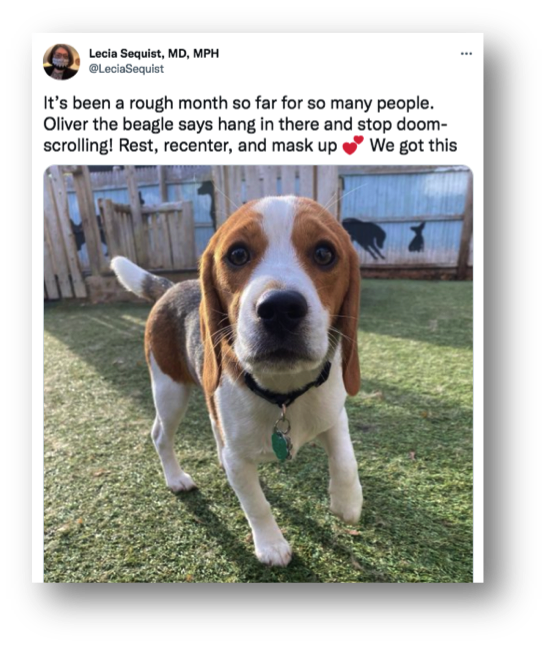
Best Practice #4: Keep Good Company
Social media makes it easier than ever to surround yourself with the people and organizations you want others to associate with you and your work.
Be part of the community, and comment on others’ content. Ask your colleagues to support your content.
Here, Dr. Wachter takes the time to acknowledge the power of community that helped him expand his digital reach during the pandemic. This kind of sentiment, coupled with tagging individuals and using the right hashtags, goes a long way in helping people understand your personal brand.

Best Practice #5: Think Beyond Yourself
Audiences are more likely to care about compassionate brands, so it’s important to show that you care about more than your work.
Dr. Sequist gives a powerful shoutout to patient advocacy expert, Jill Feldman, with this tweet by using her own platform to raise awareness.
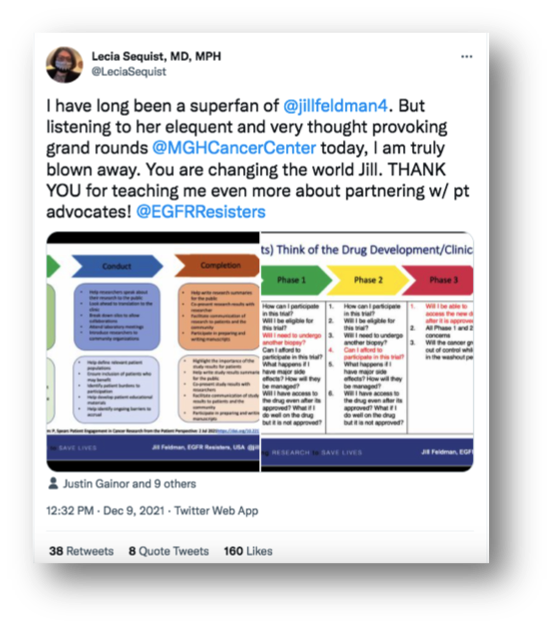
P.S. Don’t Forget TikTok
I would be remiss not to mention TikTok, which had more traffic than Google in 2021. Twitter drives much of the traffic for DOLs, but ignore TikTok at your peril.
While many people feel they’re not ready for TikTok, this hospice nurse shows you can create a following with simple videos that answer questions about topics people aren’t comfortable asking about.
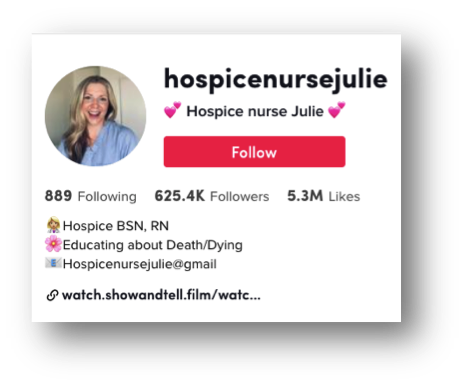
It’s important to remember that a good brand evolves over time, so what you decide today doesn’t have to be your forever brand. But it takes time to establish yourself, so be patient and deliberate. I hope to see you on this list in the future!

